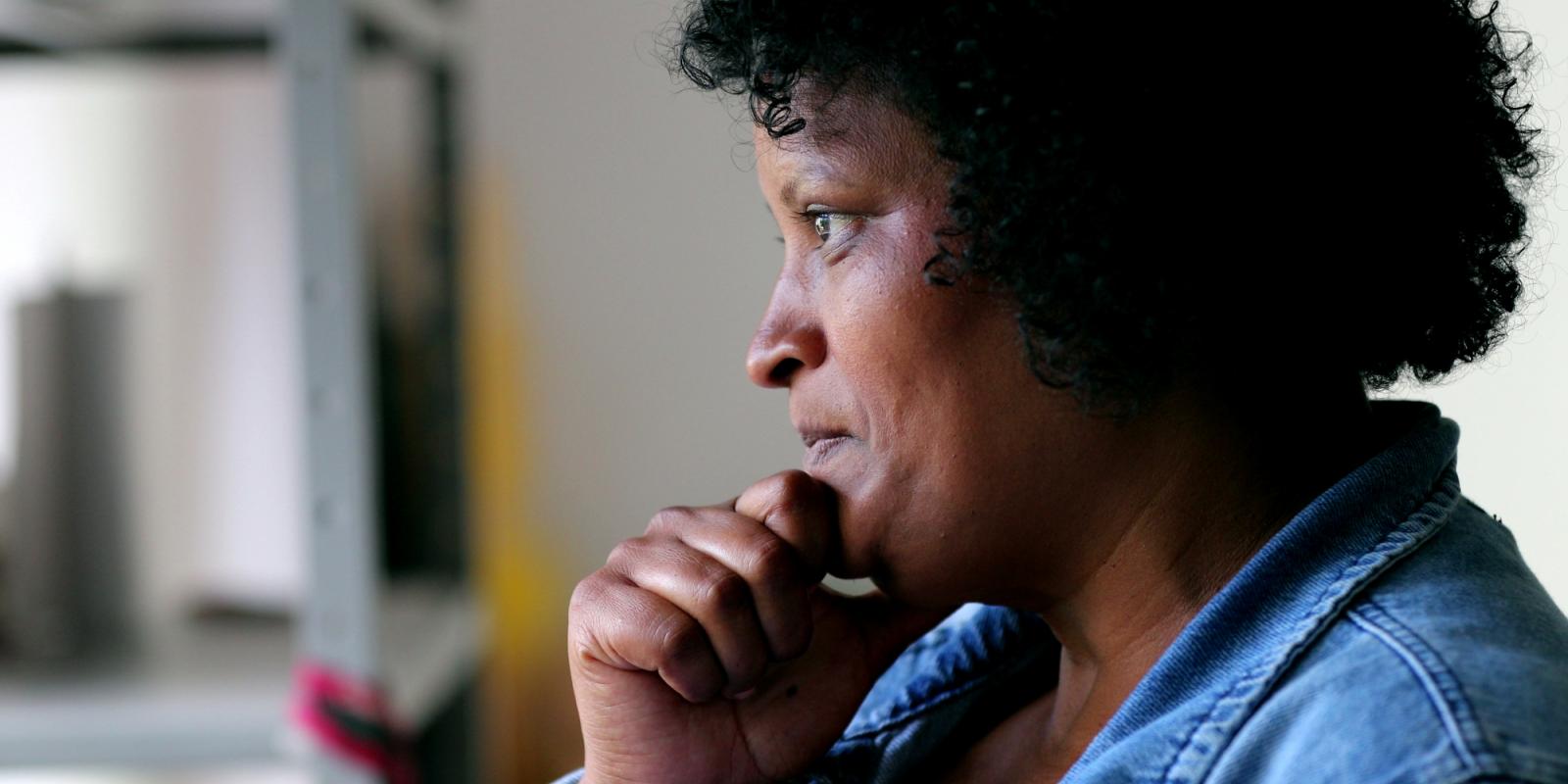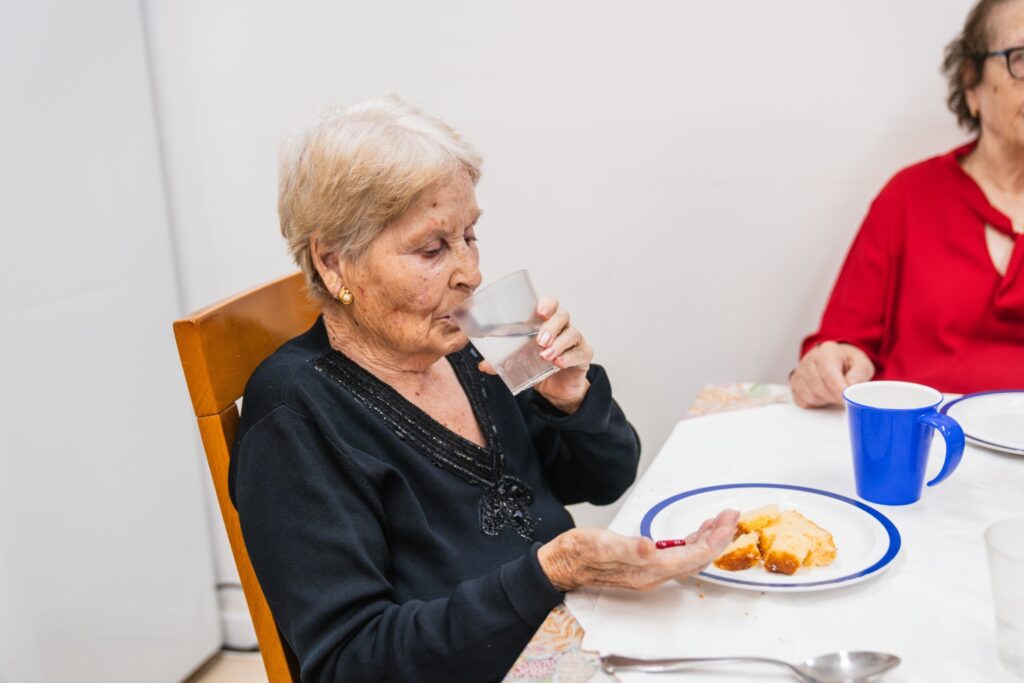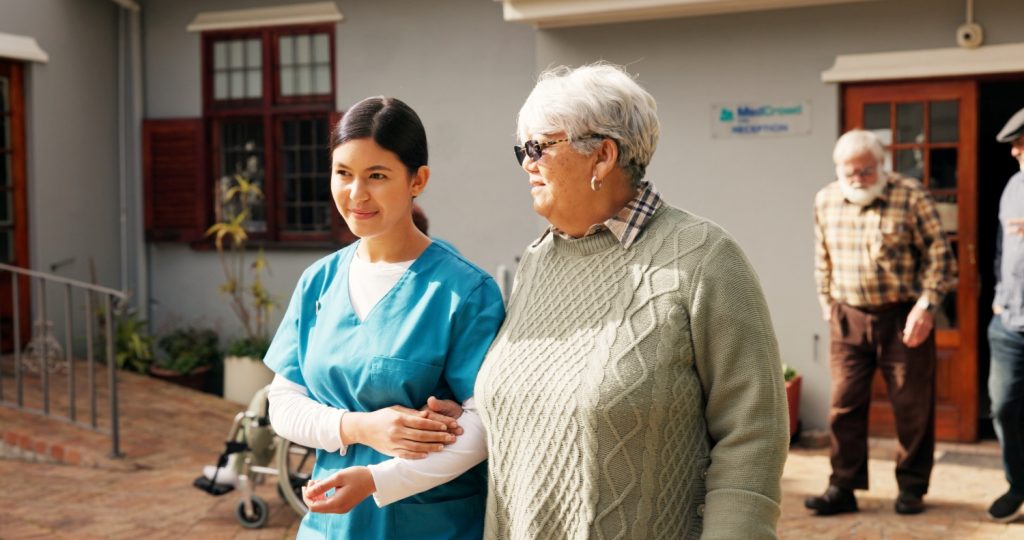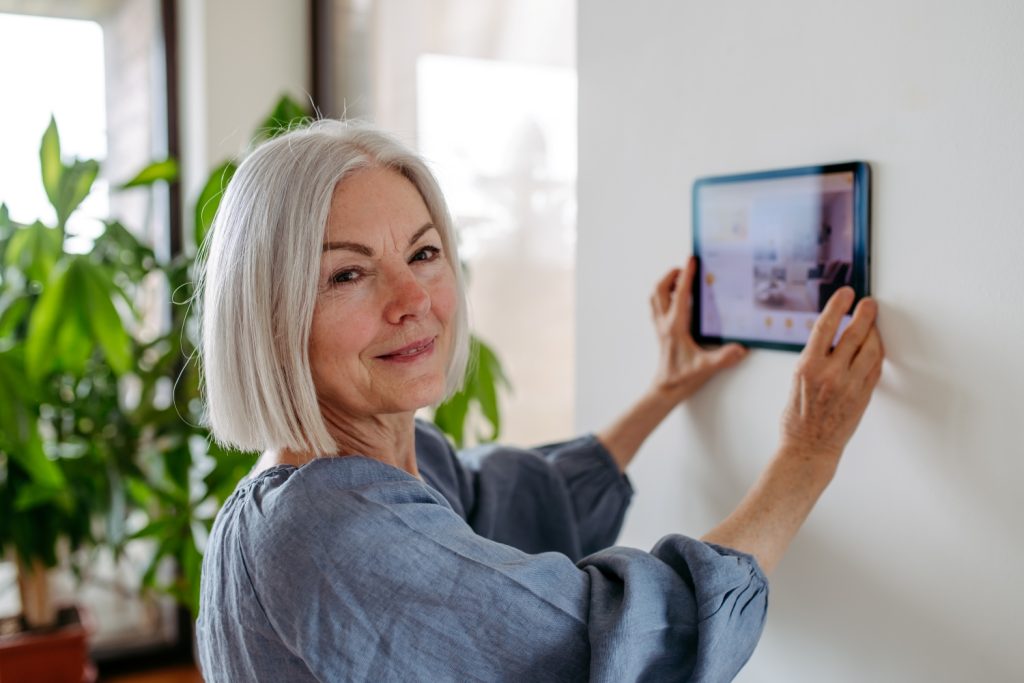Abstract
Twenty-four percent of African American women are caring for more than two people—also known as compound caregiving. Such caregivers face elevated risks of invisibility, social isolation and loneliness, emotional distress, financial strain, and physical decline due to managing multiple roles, navigating daily multigenerational needs, and caregiving with limited social support. The experiences of African American grandmothers engaged in compound caregiving are less visible in the scholarly caregiving literature. Work remains to be done to educate family members and healthcare providers on providing support that is meaningful and effective from the perspectives of African American grandmothers who are compound caregiving.
Key Words
compound caregiving, African American grandmothers, caregiving
An estimated 53 million informal caregivers exist in the United States (AARP & National Alliance for Caregiving [NAC], 2020). Involvement in caregiving has increased from 43.5 million in 2015 to 53 million in 2020, and women make up 61% of caregivers. Reasons for this growth in caregiving include the increase in Baby Boomers aging into older adulthood, shortages of aging-related services staff, shortages of state-supported home-based care services and programs, more people disclosing caregiver roles, and a combination of these factors (AARP & NAC, 2020).
Caregivers tend to be spouses or partners, adult children, siblings, and other relatives or friends. While most care recipients are older adults, care recipients exist across all age groups. The caregiving literature often limits caregivers’ experiences to involvement with one care recipient. However, two terms that raise awareness of simultaneous caregiving for more than one person are “sandwich-generation,” which refers to caring for older adults while also caring for children (Raphael & Schlesinger, 1994), and “compound caregiving,” or caring for multiple family members simultaneously (Marsack-Topolewski, 2021; Perkins, 2010).
Caregivers responsible for caring for multiple individuals face elevated risks of invisibility, social isolation and loneliness, emotional distress, financial strain, and physical decline due to their need to manage multiple roles, navigate daily multigenerational needs, and provide care with limited social support (Chang, 2023). Among the 1.12 million grandparents raising grandchildren, 15% are African American (U.S. Census Bureau, 2021). My family relations and research with African American grandparents have brought me face-to-face with the impact of compound caregiving in daily life .
Compound Caregiving in My Family
Compound caregiving has been around me my entire life without anyone ever using the term. Between 2023 and 2024, I traveled to Alabama to attend two of my sisters’ funerals. My oldest sister provided primary and supplemental caregiving (Gibson, 2014) to her grandchildren, as well as other minor relatives, while adult children or other adult relatives worked or were absent. When my oldest sister experienced a catastrophic illness approximately 8 years ago, she shifted roles from compound caregiver to care recipient.
My other sister had not been a compound caregiver, but her adult children assumed this role for years when she became ill. Thus, my two sisters’ extended chronic illnesses contributed to my nieces, nephews, great-nieces, and great-nephews becoming compound caregivers. I watched as family members went through the strain of taking care of different generations while working and trying to attend to their own health and social needs. Over time, the number of family members willing to routinely share the daily caregiving responsibilities declined. The usual disagreements occurred about disruption to normal routines, caregiving relief, finances, best approaches to caregiving, and preferences for in-home or out-of-home care.
Missing from this discussion of compound caregiving were the family members who relinquished caregiving involvement due to emotional paralysis (e.g., “I cannot stand to see them like that”), which resulted from watching the changes in the care recipient. One or two adult women tended to assume the caretaking roles. Health-related declines such as loss of sleep, increased blood pressure, psychological distress, and other pre-existing conditions escalated among my family members who were involved in compound caregiving as they sought formal support services to offset their caregiving. My observations depict the nuances of compound caregiving encountered by my family members throughout my sisters’ illnesses.
Profile of African American Women Caregivers
Twenty-four percent of African American women are caring for more than two people (AARP & NAC, 2020). These caregivers tend to be, on average, 48 years old and taking care of a loved one who is 65. African American caregivers commonly report 31 hours or more of caregiving per week. Typically, 50% of care recipients live with their caregiver, and these caregivers often do not receive support services while maintaining full-time employment and caregiving (AARP & NAC, 2020). Gradual onset of chronic health conditions can worsen the impact of compound caregiving in African American women.
Health-related declines—sleep loss, increased blood pressure, psychological distress, and other pre-existing conditions—escalated among compound caregivers.
African American women family caregivers often engage in compound caregiving out of necessity rather than choice. As family members try to bounce back economically from COVID, more caregivers assume compound-caregiving responsibilities. Issues such as multigenerational households, historic and contemporary discriminatory practices, limited economic opportunities, and expensive childcare costs can contribute to African American families living with extended family members (Jones et al., 2018; Peterson, 2018). It is common in African American families for grandparents, parents, grandchildren, adult children, and other relatives to live in the same household. These factors were also evident in my own family members’ experiences with compound caregiving.
Caregiving at Home—Momma, Daughter, and Grandchild
In my research on African American women caregivers living with hypertension, one case scenario of the nuances of compound caregiving caught my attention. I interviewed an African American woman who was co-residing with and caring for an aging parent, an adult child, and a grandchild. Three generations representing various stages of the lifespan lived in one household. The grandmother cared for two adult family members living with neurological conditions and a grandchild who had been born prematurely. She was responsible for all the driving and admitted to struggling to manage her own chronic health conditions.
This grandmother shared that the compound-caregiving role required her to frequently shift her thoughts, actions, and expectations to meet the individual needs of each family member. Juggling multigenerational caregiving left the grandmother feeling overwhelmed. Power differentials seldom come up when talking about in-home caregiving, yet elements of power emerged in this case, as this African American grandmother financially supplements a young adult child who is still financially dependent upon the adult caregiver for financial and household support. Caregiving at home had become all-consuming and a challenge to the caregiver’s individual identity.
Caregiving at Work—Paid Caregiver
In most cases, we talk about compound caregiving in the home environment as opposed to outside of the home. But the African American grandmother in my research worked in a paid caregiver role outside of the home, too. The following statement reflects what can happen when compound caregiving at home is coupled with full-time employment as a paid caregiver for someone else (Peterson, 2021):
“I’m getting ready to be a grandma for the first time and I’m going to have to help my daughter out … I never leave caregiving … I have a patient that I take care of overnight, and then I come home and take care of momma … I’m the last one on the list.”
The grandmother conveys her daily reality as a compound caregiver for a grandchild, adult child, aging parent, and a patient in the community. Moreover, the words “I never leave caregiving” resonated with me. Kinship caregivers such as this African American grandparent give voice to how the demands of caregiving can quickly become a labor-intensive means of financially supporting the household. The word “never” occurs when the compound caregiver leaves caregiving at home only for a shift as a paid caregiver for a nonfamily member. The endless cycle of compound caregiving by this grandmother forces her to conclude that her needs are the lowest priority. As this case shows, compound caregivers face several factors that can compromise their well-being.
Sleep, Not Money
A lack of sufficient sleep is an understudied issue related to compound caregiving. The African American grandmother in my research reported sleeping an average of only 2.5 hours each night. Occasionally the adult daughter stepped in with caregiving duties to allow the grandmother more hours of sleep, but the grandmother wanted more help from family members. She admitted to paying for hotel rooms on occasion in order to temporarily escape compound caregiving and obtain quality sleep, but this is not a feasible long-term solution.
The grandmother’s siblings offered to pay for respite services to relieve her load, but she didn’t view these offers as a replacement for caregiving support from family. This grandmother knew she had adequate financial resources to manage the daily needs of caregiving and the household. The stern tone in her voice and her word choice while describing these events suggested that she was offended that family members offered financial support instead of firsthand caregiving support with her aging mother.
‘I must have looked at her [doctor] crazy. And I told her … Black people just usually don’t do that … put our family members in nursing homes.’
The lack of respite support from other family members contributed to the caregiver’s increased emotional strain. While other adult family members occasionally visited, the frequency of visits were not adequate to offer relief from caregiving stress. The caregiver refused financial support or other tangible goods to assist with respite because these resources did not meet her most pressing needs. Her family members tend to think that money can take care of all basic needs, but, as told by this African American grandmother, money does not always provide the most practical needs for an overburdened caregiver, such as more and better sleep. We must listen and remain open to what African American grandmothers identify as the resources and supports that will positively influence in their compound-caregiving situation.
Cultural Nature of African American Caregiving
Healthcare providers may have good intentions, but often have a limited view of the historical and cultural connections of caregiving in African American families. During my conversation with this grandmother, she described a healthcare provider who suggested that she move her parent into a nursing home due to the negative health impacts of compound caregiving. Nursing home placement was not an option for this African American grandmother. Historically, African American families were forcibly enslaved and prevented from accessing institutionalized resources and programs (Boyd-Franklin, 2003). African American caregivers remain more likely to care for family members at home than other cultural groups. Rather than accepting the provider’s recommendation, the caregiver educated their healthcare provider on caregiving in African American families (Peterson, 2021). She explained,
“I must have looked at her [doctor] crazy. And I told her … Black people just usually don’t do that … put our family members in nursing homes … Unless it just gets so bad … I think culturally as African Americans … we just old school and we try to take care of them at home … my Momma took care … my grandmother … And I said … I’m gonna be honest with you, I think it’s a cultural thing with us. But you know, like we take care of Big Momma, granddaddy. We do what we got to do.”
Seldom do we talk about African American grandmothers who assert themselves when providers offer suggestions that conflict with their personal and family values. We need to find more ways to support the voices of such grandmothers when they demonstrate empowerment in the face of difficult compound-caregiving circumstances. This caregiver seemed proud to share a history of caregiving across generations in her family. There is reason to be concerned about the health impacts of caregiving on African American women, but not at the expense of denying the feelings of meaning, pride, and control over healthcare decisions experienced by caregivers in the African American community.
Managing Stress While Gardening
Given that nursing home placement was “off the table,” this African American grandmother challenged her healthcare provider to offer other solutions to help her manage stress. The healthcare provider brainstormed with her about how to “take yourself to a happy place. Even if it’s in your childhood, that you remember that made you happy.” This one, simple conversation about “a happy place” stimulated this grandmother to reflect on her most pleasant memories as a child. Notice the outcome of a healthcare provider investing the time to listen and sit with a caregiver while she resolves her own issue (Peterson, 2021). The grandmother stated,
“One thing I thoroughly enjoyed [as a child] was helping my grandmother plant, work in the yard… I literally created an oasis in the yard … I loved helping my grandmother, you know, work her flowers and stuff in the yard … And I literally worked in my yard 12 hours a day. And that’s what I did. And if I had not done that, I don’t believe I would be here talking. And that’s the honest God truth.”
Near the end of our conversation, this grandmother shared with me that she had been outside working in her garden the entire time we were talking. She stunned me with this disclosure because the interview had lasted approximately 2 hours. She had arranged with the city to zone her mother’s yard so that she could have flower beds. Her “oasis in the yard” expanded when her adult children gifted her a greenhouse in her garage that she could use to grow year-round vegetables.
The produce became a community resource shared with family and neighbors during the COVID pandemic. This practical solution to stress management reveals the power of caregivers engaging in problem solving to improve their health and quality of life.
Compound Caregiving Takeaways
In closing, compound caregiving by African American grandmothers is not new. African American grandmothers and their voices are often hidden or isolated in conversations on compound caregiving. The ability to obtain quality and quantity of sleep is vitally important to the health and well-being of all caregivers. There remains work to do around educating family members on providing support that is meaningful and intentional from the perspective of African American grandmothers. Cultural aspects of caregiving continue to be relevant to African American families.
We need more healthcare providers who can engage in person-centered conversations to support African American women on their caregiving journeys, especially in instances of compound caregiving. Keep in mind that the most promising stress-management solutions can come from African American grandmothers. More attention to compound caregiving by African American grandmothers can enhance integration of their cultural values and voices to better tailor interventions and advocacy to their caregiving needs.
Tina L. Dothard Peterson, PhD, MPH, CSW, FGSA, is an associate professor at the University of Cincinnati School of Social Work, in Cincinnati, OH. She may be contacted at dothartl@ucmail.uc.edu.
Photo credit: Shutterstock/Bricolage
References
AARP & National Alliance on Caregiving. (2020). Caregiving in the U.S. 2020. Washington, D.C. https://doi.org/10.26419/ppi.00103.001
Boyd-Franklin, N. (2003). Black families in therapy. The Guilford Press.
Chang, E. (2023, March 22). The sandwich generation is changing. The stress remains. The Washington Post. https://www.washingtonpost.com/parenting/2023/03/22/caregivers-sandwich-generation/
Gibson, P. A. (2014). Grandmother caregiver-in-chief continues the tradition of African American families. Affilia: Journal of Women and Social Work, 29, 298-309. https://doi.org/10.1177/0886109913519794
Jones, L. M., Wright, K. D., Wallace, M. K., & Veinot, T. (2018). “Take an opportunity whenever you get it”: Information sharing among African American women with hypertension. Journal of Association of Information Science Technology, 69, 168-171. https://doi.org/10.1002/asi.23923
Marsack-Topolewski, C. N. (2021). Mediating effects of social support on caregiver burden and quality of life for compound and noncompound caregivers. Families in Society: The Journal of Contemporary Social Services, 102(2), 240-252.
Perkins, E. A. (2010). The compound caregiver: A case study of multiple caregiving roles, Clinical Gerontologist, 33(3), 248-254. https://doi.org/10.1080/07317111003773619
Peterson, T. (2021). Self-management of hypertension in African American women family caregivers [Unpublished raw data].
Peterson, T. (2018). A case study of an African American stepgrandmother raising adopted grandchildren. Journal of Family Social Work, 21, 381-398.
Raphael, D., & Schlesinger, B. (1994). Women in the sandwich generation: Do adult children living at home help? Journal of Women & Aging, 6, 21-45.
U.S Census Bureau (2021). 2021 Table S1002 Grandparents, American Community Survey 5- Year Estimates. Accessed June 2024. https://data.census.gov/table/ACSST5Y2021.S1002













